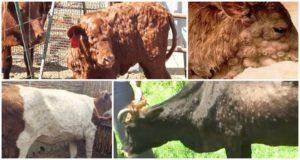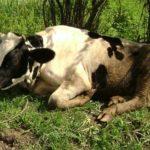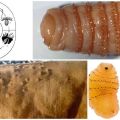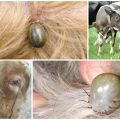Cattle Disease Treatment, Veterinary Guide
Farmers pay a lot of attention to pet care. The productivity of the breed depends on nutrition, regimen and immunity. Diseases are dangerous for cows. It is important to know what ailments animals are prone to, and to take action in time. Some pathologies can destroy an entire herd. The well-being of the entire livestock depends on the methods of treating cattle.
List of diseases in cattle and methods of their treatment
Cows are prone to a variety of infections. In cattle, pathologies of the intestinal tract, blood, gynecological problems and other ailments are also observed. Some diseases lead to the death of cows.
Infectious diseases
A sick cow often infects the rest of the herd. A high risk of spread is characteristic of infectious diseases. A handbook on veterinary medicine will be useful for farmers. The manual describes methods of treatment for common ailments and preventive measures. One of the main symptoms of the disease is body temperature. With infections, it rises. Other signs:
- The animal loses its appetite.
- Cold ears.
- Milk production drops sharply.
- A sick cow has dull eyes and a dry nose.
- The cow's hair becomes brittle and falls out.
- A feverish state is observed, the animal is trembling.
Such manifestations indicate the onset of the disease. The most common types are:
- Brucellosis provokes problems with the joints, affects the genitals of the cow, inflammation of the testicles is observed in bulls. Antibiotics are prescribed to fight bacteria. "Lexoflon" is given within 5 days.
- Ringworm is also characterized by gray patches. The affected areas gradually increase in size. Sore spots are treated with a fungicidal solution. The vaccine is used as a preventive measure.
- Chronic actinomycosis causes tumor formation. Purulent fistulas burst inside or outside the body. Antibiotics, which are used to inject the seal, help, as well as injections of potassium iodide.

The diagnosis and treatment regimen are agreed with the veterinarian. Attempts to self-treat cattle can end up sadly.
Udder diseases
Udder mastitis occurs in cows during lactation and causes severe discomfort. Antibiotics are used for treatment. But in the case of early diagnosis, it is possible to use compresses based on medicinal infusions.
Other types of diseases:
| Ailment | Manifestations | Treatment |
| Furunculosis | Ulcers form on the udder | The affected areas are smeared with iodine, the abscesses are opened and treated with disinfectants |
| Edema | Reduced milk yield | Reduce the proportion of fresh grass and grains in the diet |
| Udder contusion | Bruising and decreased milk production | Rest and cooling compresses |
| Cracks | The skin becomes dry | Make poultices, lubricate sore spots with petroleum jelly or antiseptics |
Udder diseases can lead to injuries, poor grooming and improper milking techniques. Regular examinations of cattle and hygiene measures will become preventive measures.
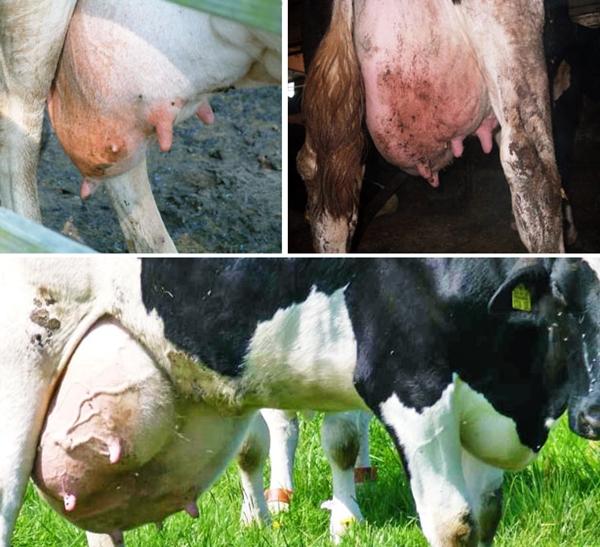
Parasitic
This group unites such ailments as piroplasmosis, cysticercosis, thelaziosis and others. Cows can become infected from other animals while walking, fleas, lice or ticks are dangerous.
General signs of the disease:
- The animal looks depressed.
- The cows lose their appetite.
- Frequent diarrhea.
- Rapid weight loss.
- There is a cough, pneumonia may develop.
- Excessive accumulation of worms is fatal.
For treatment, anthelmintic drugs are prescribed. The dosage is best discussed with your veterinarian.
Skin problems
Cows often suffer from eczema, dermatitis, woodlice and other skin problems. Disease affects the milk yield, leads to weight loss and aggression. As a preventive measure in veterinary medicine, cows are regularly examined by specialists. But some symptoms are easily diagnosed by farmers themselves.
Eczema is common in cattle. It can be triggered by nutritional errors, chronic illness, or a reaction to medications. If the formation of abscesses is affected by a tight collar or ticks, it is enough to eliminate the source of irritation. In other cases, you cannot do without the help of a veterinarian.
A doctor is also called in to examine severe swelling at the wound site. An abscess requires surgery. Independent attempts to cope with inflammation are more likely to end in a worsening of the animal's condition, rather than recovery.

Blood diseases
One of the most dangerous diseases affecting cattle is leukemia. The infection affects the hematopoietic system. The disease is not initially diagnosed. Symptoms appear at the final stage of the disease:
- The main symptom is an increase in lymph nodes.
- Decreased milk flow.
- Great emaciation.
The disease leads to the death of the animal. The vaccine has not yet been developed. When confirming the diagnosis in one individual, all cattle are checked for leukemia. Dangerous for cows and piroplasmosis, which is transmitted through tick bites. Signs of pathology:
- The animal stops eating.
- The body's thermoregulation is impaired.
- Movement is difficult.
- Rapid pulse.
It is important to make a diagnosis on time. At an early stage, the disease is guaranteed to be treatable. Infected cows are isolated, given injections, maintenance drugs, and chemotherapy.
Diseases of the gastrointestinal tract
Improper nutrition leads to digestive system upset. Such diseases are classified as non-communicable. The disease does not apply to the rest of the livestock, but can lead to the death of the cow. Animal rescue measures are taken at the first suspicion of danger.
Reticulitis and pericarditis
Disease occurs when a cow swallows sharp objects. A needle or a piece of wire in the first case injures the esophagus. But sometimes they lead to damage to the tissue of the heart membrane.
The main symptoms are:
| Signs of reticulitis | Pericarditis |
| Decreased appetite, sometimes complete refusal of food, constipation | Pulse rises to 120 beats per minute |
| Elevated temperature | Weak muscle tone |
| Lethargy and cautious movements | The cow adopts unnatural postures, spreading the front legs wide and bringing the hind legs together. |

In traumatic reticulitis, the foreign body is removed with a magnetic probe. In severe cases, they resort to surgical intervention. If peritonitis is suspected, antibiotics, ichthyol, or magnesium sulfate are used. If the heart is hurt, the bull or cow is sent to slaughter.
Tympanic scar
Excessive consumption of fermenting foods leads to increased gas formation. When tympanic, the scar begins to press on the diaphragm, which causes oxygen starvation.
If the animal is not helped, the disease will lead to death. The cow is massaged and given products that promote the elimination of gases.
Blockage of the esophagus
An unpleasant phenomenon occurs when feeding cattle with large pieces of solid food. Sometimes the blockage is caused by foreign bodies, which provoke swelling of the internal organs and stopping the stomach. The vegetable oil will lighten the condition and help push the jammed object through. If the cow does not swallow on its own, resort to using a probe.

Viruses
Viral diseases cause serious consequences. Untimely assistance can lead to the death of the livestock.
Viral diarrhea
Some viruses cause intestinal inflammation. Microorganisms live at high temperatures, retain the ability to reproduce for 3 years.
Disease manifestations:
- Failures of thermoregulation processes.
- Cardiopalmus.
- Coughing.
- Diarrhea with bleeding.
- The appearance of ulcers in the mouth and purulent discharge from the nasopharynx.
The disease is especially dangerous for young animals. A fragile body cannot cope with the virus. The mortality rate among calves sometimes reaches 90%. As a vaccine, blood serum of recovered animals is used.
Nodular dermatitis
A relatively new disease. The first case of pathology was registered in 2015. The virus tolerates freezing, and at 4 degrees above zero it lasts up to six months.
The strain, when ingested, causes in cattle:
- The appearance of ulcerative formations on the eyelids and loss of vision.
- Skin rashes.
- Loss of appetite and weight loss.
- Discharge from the nose, copious formation of saliva.
- Increased body temperature.
Vaccination of the livestock reduces the risk of infection.
Others
Among other ailments of cattle, hoof diseases are distinguished. The pathology does not lead to the death of the livestock, but affects the productivity of the herd.

Common problems:
- An infection that enters the wound with bruises causes tissue inflammation - corolla phlegmon. Compresses and washing of the affected organ are used as an ambulance for trauma.
- Unsanitary conditions for keeping cattle provoke laminitis - the accumulation of fluid in the hoof area. The sore spot is cut off. The cow is transferred to a clean stall.
- Red bumps that appear on the limbs are called strawberry disease. To improve the condition of the animal, it is enough to revise the diet and strengthen hygiene measures.
Any injuries that the livestock receive require attention and timely treatment.
What diseases are dangerous to people
A number of diseases are harmful not only for the livestock of cattle, but also threaten human life. The mortal danger is represented by:
- Rabies causes aggression, exhaustion and seizures in cows. The infection is spreading rapidly. There are no cures. When the diagnosis is confirmed, the animal is killed and the carcass is burned.
- Foot and mouth disease is characterized by the appearance of aphthous foci. If the disease is benign, the animal recovers in 2 weeks. Serum is used for treatment, the affected areas are treated with antiseptics and synthomycin ointment.Malignant formations lead to the death of cows.
- With anthrax, fever sets in, the mucous membranes become bluish. The disease leads to intoxication of the body, the appearance of carbuncles and then to the death of animals. To prevent infection of the herd, a quarantine is introduced, the premises are disinfected, the corpses are destroyed.
To reduce the risk of a serious problem, good hygiene measures and regular veterinary examinations of cattle are necessary. It is important for farmers to know the signs of common pathologies. Timely measures taken often lead to the animal's recovery. Early detection of incurable diseases will save the rest of the population.
